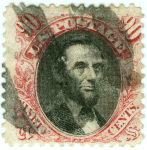
Discussion - Member to Member Sales - Research Center

Discussion - Member to Member Sales - Research Center



Login to Like
this post
I posted a similar question 6 Feb 2014 under "General Philatelic/Identify This?: Help ID and Postmark.
I am not sure how to direct you straight to that posting, but if you search under the above listing posted by mbo1142, you may find part of the answer you are looking for. Do not know what the letters stand for, but the triangle postmark is explained fairly well.
Good luck.
Mel

Login to Like
this post
The letters/numbers in the triangles indicate the post office which processed these pieces of mail. KT is likely Kent. I have a list somewhere.

Login to Like
this post
mbo1142, thanks for the reference. That posting dealt with several issues but the crux of the triangle comments was that they were machine generated cancels for mass mailings from as early as 1902. They would seem to be collectible, perhaps I will offer to a precancel specialist.

Login to Like
this post
Here is a StampoRama thread on the matter:
Identification Triangular Cancels
In the post there are some who refer to these as bulk mail cancels. This is a mistake. These are Printed Matter cancels. You will usually find them on low denomination stamps and covers because of the cheaper rate for mailing printed matter.
I hope this helps.

Login to Like
this post
"They would seem to be collectible, perhaps I will offer to a precancel specialist."
They are indeed collectible, but are usually collected on cover (with the whole cancel). They are not pre-cancels.


Login to Like
this post
I found a list of postal codes which I assume were current but LX is not included.

Login to Like
this post
Many postal codes from 100+ years ago have been renamed, closed, etc.
LX is Liverpool Exchange
KT is Kingston on Thames

1 Member
likes this post.
Login to Like.
Great link LB1! Thanks.

Login to Like
this post

12:07:16am
There were also Inspector's Marks"
a triangle with either a number or initials
of either the inspector or the place he
operated from.
While a bit more involved, both Land's End
and John O'Groats used a double lined Triangle
with the name inscribed which could be
considered a cachet or a cancellation,
depending how it fell on the stamp or cover.
There were wavy lines included as a killer.
So if a stamp were soaked from the cover
and only showed the decorative triangle,
it might be a puzzler.

Login to Like
this post

I would like identification for the triangles cancels scanned here (if they are cancels).


Login to Like
this post

Approvals
re: Identify UK Cancels
I posted a similar question 6 Feb 2014 under "General Philatelic/Identify This?: Help ID and Postmark.
I am not sure how to direct you straight to that posting, but if you search under the above listing posted by mbo1142, you may find part of the answer you are looking for. Do not know what the letters stand for, but the triangle postmark is explained fairly well.
Good luck.
Mel

Login to Like
this post

re: Identify UK Cancels
The letters/numbers in the triangles indicate the post office which processed these pieces of mail. KT is likely Kent. I have a list somewhere.

Login to Like
this post

re: Identify UK Cancels
mbo1142, thanks for the reference. That posting dealt with several issues but the crux of the triangle comments was that they were machine generated cancels for mass mailings from as early as 1902. They would seem to be collectible, perhaps I will offer to a precancel specialist.

Login to Like
this post

re: Identify UK Cancels
Here is a StampoRama thread on the matter:
Identification Triangular Cancels
In the post there are some who refer to these as bulk mail cancels. This is a mistake. These are Printed Matter cancels. You will usually find them on low denomination stamps and covers because of the cheaper rate for mailing printed matter.
I hope this helps.

Login to Like
this post

re: Identify UK Cancels
"They would seem to be collectible, perhaps I will offer to a precancel specialist."
They are indeed collectible, but are usually collected on cover (with the whole cancel). They are not pre-cancels.


Login to Like
this post

re: Identify UK Cancels
I found a list of postal codes which I assume were current but LX is not included.

Login to Like
this post

re: Identify UK Cancels
Many postal codes from 100+ years ago have been renamed, closed, etc.
LX is Liverpool Exchange
KT is Kingston on Thames

1 Member
likes this post.
Login to Like.
Silence in the face of adversity is the father of complicity and collusion, the first cousins of conspiracy..
29 May 2018
12:07:16am
re: Identify UK Cancels
There were also Inspector's Marks"
a triangle with either a number or initials
of either the inspector or the place he
operated from.
While a bit more involved, both Land's End
and John O'Groats used a double lined Triangle
with the name inscribed which could be
considered a cachet or a cancellation,
depending how it fell on the stamp or cover.
There were wavy lines included as a killer.
So if a stamp were soaked from the cover
and only showed the decorative triangle,
it might be a puzzler.

Login to Like
this post



